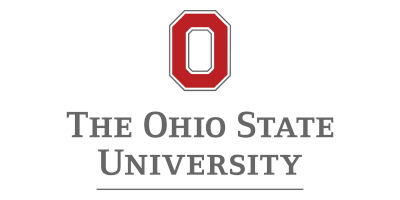CompSubjInf
Competition between subjunctive and infinitive in the history of German, Balkan Slavic and Romance languages
Project
The project focuses on the area of language change and evolution (i.e. diachronic linguistics), specifically as it pertains to the use of the grammatical categories of subjunctive and infinitive. These two categories are involved in the phenomenon of grammatical competition (both synchronic and diachronic) across different groups of European languages. In Germanic languages (e.g. German, Swedish), the subjunctive receded over time, whereas the infinitive remained relatively more stable. Balkan languages (e.g. Greek, Bulgarian) underwent a reverse process, phasing out their infinitives and replacing them with subjunctives. Romance languages (e.g. Italian, French) still productively use both of these categories, but employ them in different syntactic contexts.
The competition between subjunctives and infinitives represents one of the important grammatical aspects underlying linguistic diversity between European languages. The present project aims to shed light on this phenomenon by studying several representative languages for each of the linguistic groups outlined above: German in the context of Germanic, Balkan Slavic (e.g. Bulgarian, Serbian) in the context of Balkan, and Italian and French in the context of Romance languages.
The overall objective of the project is two-fold:
- describe the evolving historical tendencies pertaining to the competition between subjunctives and infinitives in these languages;
- identify the underlying factors (both linguistic and extra-linguistic) that led to these tendencies.
The ongoing research within the project tackles these challenges by developing a cross-disciplinary and multifactorial analysis to account for the phenomenon of subjunctive-infinitive competition and its diverse manifestations across languages and across different historical periods.
Research
Research venues
Ca’ Foscari University of Venice, originally established in 1868 as Royal Business College, is today widely recognized as one of the top universities in Italy. It offers students diverse and wide-ranging study programs in various different areas, including: Humanities, Foreign languages, Economics and business, Environmental sciences, Information technologies, Molecular sciences and Nanosystems, as well as studies on Social, economic and environmental sustainability. Ca’ Foscari consists of 8 Departments, which carry out both research and teaching, a Summer School and a Graduate School. The research conducted at the University is funded both with internal, as well as national, European and international resources and grants. In the period between 2014 and the start date of the present project, Ca’ Foscari has been awarded 158 grants within the frame of individual and collaborative European and international projects, 92 of which have been funded in the context of Horizon 2020. The University was awarded the Label of Human Resources Excellence in Research in 2017.
Useful links:
The Ohio State University is a public research university situated in Columbus, Ohio. When it was originally founded in 1870, under the name of Ohio Agricultural and Mechanical College, the institute was more narrowly focused on mechanical disciplines, but over the years it grew and developed into a comprehensive university with research and teaching in dozens of different disciplines, including humanities, natural and social sciences, engineering or information technology, among others. The main campus in Columbus, Ohio is today the third largest university campus in the United States. The University is divided into 16 colleges and schools, hosting dozens of different disciplines, research and study centers. According to various different university ranking systems (e.g. Academic Ranking of World Universities/Shanghai Ranking, QS World University Rankings etc.), Ohio State has been consistently ranked among 100 best universities in the world and 50 top universities in the United States. The research conducted at the University is funded both with internal, as well as US-based (e.g. National Science Foundation) and international resources and grants.
Useful links:
Online corpora used for research
Outputs
Workshops organized
Project publications
|
|
Tomislav Sočanac and Brian D. Joseph, “Getting serious about serial verbs: Evidence from Croatian"
DOI: https://doi.org/10.3765/plsa.v8i1.5481 |
257 KB |
- Tomislav Sočanac, “The diachrony of subjunctive-infinitive competition in Balkan Slavic: Typological vs sprachbund phenomena”
DOI: https://doi.org/10.30687/bes/2785-3187/2023/02/005
Conference presentations
|
|
21/06/2024 - "Diachrony of the South-Slavic mood marker da in the context of Balkan infinitive loss"
Talk Project workshop: Mood and modality markers across languages Ca' Foscari University, Venice, Italy |
1 MB |
|
|
20/06/2024 - "South Slavic complementizers and mood markers in relation to factivity and veridicality"
Joint talk with Prof. Iliyana Krapova Project workshop: Mood and modality markers across languages Ca' Foscari University, Venice, Italy |
2 MB |
|
|
16-19/05/2024 - "Diachrony of subjunctive-infinitive competition: Typological vs sprachbund phenomena"
Talk FASL 33: Formal Approaches to Slavic Languages Dalhousie University, Halifax, Canada |
291 KB |
|
|
14-17/12/2023 - "Greek serial verbs extended and reassessed: Extending their synchronic, diachronic and geographic scope"
Joint talk with Prof. Brian Joseph ICGL 16: 16th International Conference on Greek Linguistics Aristotle University of Thessaloniki, Thessaloniki, Greece |
751 KB |
|
|
29/08-1/09/2023 - “Serial verbs in Croatian? Go figure!”
Joint poster presentation with Prof. Brian D. Joseph SLE 56: 56th annual meeting of the Societas Linguistica Europaea National and Kapodistrian University of Athens, Athens, Greece |
1 MB |
|
|
19-21/05/2023 - "Croatian serial verbs compared with subjunctives and infinitives: a formal analysis"
Talk FASL 32: Formal Approaches to Slavic Languages Indiana University, Bloomington IN |
422 KB |
|
|
22/04/2023 - “A formal analysis of Croatian serial verbs”
Joint talk with Prof. Brian D. Joseph 2nd international Ohio State-Ca’ Foscari joint workshop Ohio State University, Columbus OH |
245 KB |
- 5-8/01/2023 - “On parallels between verbal complement structures and serial verb structures in Croatian and beyond”
Joint poster presentation with Prof. Brian D. Joseph
LSA 97: 97th annual meeting of the Linguistic Society of America
Hyatt Regency, Denver CO
|
|
7-10/04/2022 - “Factivity and veridicality in South Slavic and Balkan languages”
Joint talk with Prof. Iliyana Krapova BSSC22: 22nd biennial conference on Balkan and South Slavic linguistics, literature, and folklore Ohio State University, Columbus OH |
347 KB |
|
|
2/03/2022 - “Subjunctive-infinitive competition in Balkan Slavic languages”
Talk 1st international Ohio State-Ca’ Foscari joint workshop Ohio State University, Columbus OH |
597 KB |


